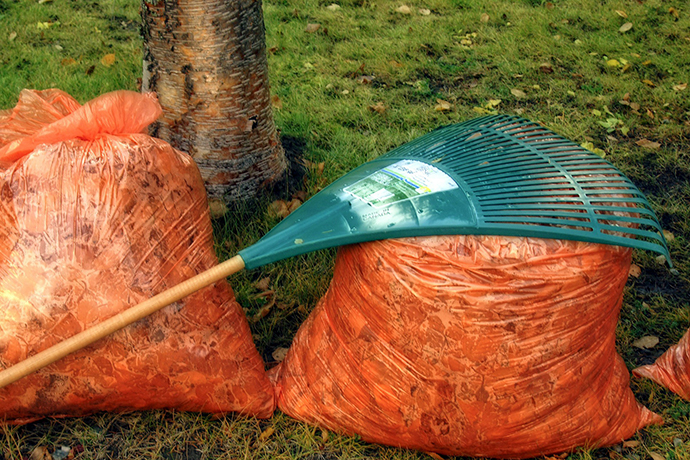Ask an Expert: Five Fall Must-Do Yard Tasks
 With autumn here, it’s time to think about getting the yard ready for winter. Consider the following tasks that will help your yard be healthy and happy next spring.
With autumn here, it’s time to think about getting the yard ready for winter. Consider the following tasks that will help your yard be healthy and happy next spring.
1. Remove leaves by raking, mowing or vacuuming with a leaf blower. Mowing and vacuuming chop up leaves and reduce the bulk so more fits into leaf bags or compost piles. The reduced bulk also makes it easier to mix leaves into the soil. Do not send them to the landfill, as they are valuable for improving the soil and easy to compost. Instead, send them to green waste or check with neighbors who might be able to use them.
2. Early to mid-fall is a great time to spray lawn weeds such as dandelions and harder-to-kill perennial weeds such as field bindweed (morning glory). There are many products that are registered for spraying on the lawn, but if you need to spray in the garden, avoid contamination by making sure all produce is removed and you are done for the year. As always, read and follow all product labels.
3. Just after the first hard frost is the best time to cut back annuals and perennials. Foliage will be scorched and yellow or brown. Cut perennials a few inches above the ground and do the same with annuals, or pull them out completely. If the removed foliage is not diseased, compost it or send it to green waste. If it is diseased, throw it away. This is also a good time to apply 1-3 inches of compost to flowerbeds. If there is risk of damage to existing plant roots, the compost does not need to be tilled in.
4. The final lawn mowing should occur between late October and early November. Lower the mowing height to around 2 inches. This helps slow the spread of winter-active fungal diseases such as snow mold. It is also important to remove all leaf litter from the lawn.
5. If the lawn had moderate-to-heavy traffic during the summer, fall is a great time to fertilize. The lawn stores nutrients and will break dormancy sooner in the spring. There are many standard and organic fertilizer options available. Follow the instructions on the bag.
One thing you should not do in the fall is heavy pruning of woody plants. Pruning delays dormancy and can make these much more susceptible to winter damage. Instead, between mid and late winter is a much better time to prune ornamental trees. Prune most flowering and fruit-bearing trees in late winter or early spring. If shrubs do not flower or they flower in the summer, prune in late winter. Spring flowering shrubs such as snowball bush, bridal wreath, lilac, etc., should be pruned as soon as they are done blooming in the spring.
By: Taun Beddes, Utah State University Extension horticulturist, 801-851-8460, taun.beddes@usu.edu


 Utah 4-H & Youth
Utah 4-H & Youth